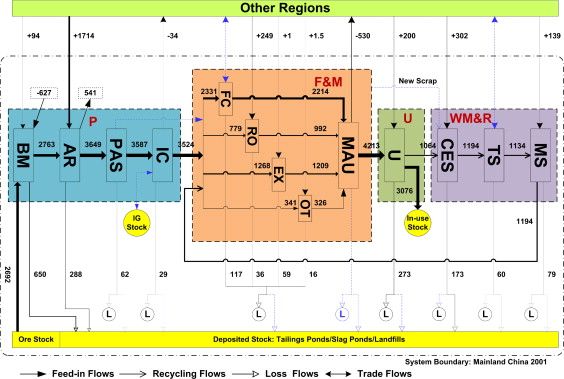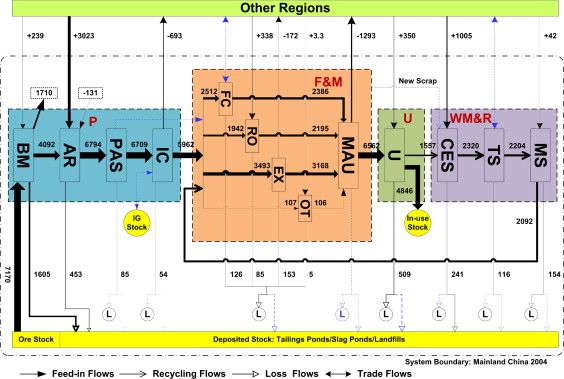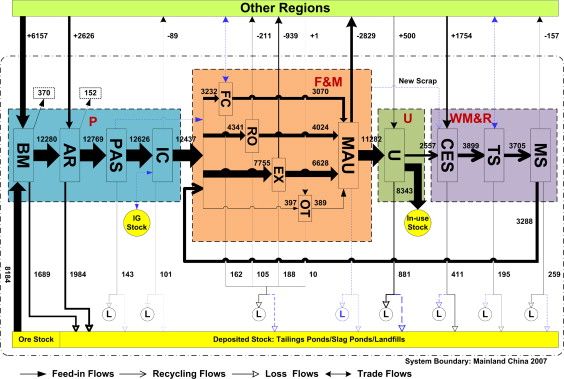Chen Wei-Qiang*; Shi Lei*; Qian Yi
Resources, Conservation and Recycling 2010 54 (9), 557-570. DOI: 10.1016/j.resconrec.2009.10.013
Abstract
Based on the characterization of aluminium life cycle in the anthroposphere, stocks and flows accounting of aluminium in mainland China for 2001, 2004 and 2007 was performed in this paper. Findings include the following: (1) the production and consumption of aluminium contained in aluminium-containing products generated from each life process grew from 2001 to 2004, and then to 2007; (2) the share of recycled aluminium in both production and consumption of unwrought aluminium was in the range of 20–26%, and a majority of aluminium scrap used to produce recycled aluminium for 2004 and 2007 came from net import, which revealed that China was still in the stage of mainly depending on primary aluminium rather than secondary aluminium and the in-use stock of aluminium was still too small to generate enough end-of-life (EOL) scrap; (3) China was a net importer of aluminium from the life cycle perspective, with total net import increasing from 2001 to 2004, and then to 2007; as for the trade structure, China was a net importer of raw materials including bauxite, alumina, EOL products and aluminium scrap, while a net exporter of unwrought aluminium and final products, and changed from a net importer of wrought products in 2001 and 2004 to a net exporter in 2007; (4) total quantity losses of aluminium in China increased from 2001 to 2004 and then to 2007 as a result of the growth of production; (5) depletion of domestic ore stock in China also increased from 2001 to 2004, and then to 2007, making China's depletion time of bauxite probably less than 15 years; (6) growth of in-use stock was 2.4 kg per capita, 3.7 kg per capita and 6.3 kg per capita for 2001, 2004 and 2007, respectively; (7) more than 80% of the addition of aluminium to the deposited stock came from aluminium losses in Bauxite Mining and Alumina Refining processes.
Anthropogenic aluminium cycles in mainland China for (a) 2001, (b) 2004, and (c) 2007.


